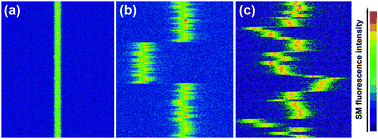Low-temperature dynamics in amorphous polymers and low-molecular-weight glasses—what is the difference?
Abstract
Numerous experiments have shown that the low-temperature dynamics of a wide variety of disordered solids is qualitatively universal. However, most of these results were obtained with ensemble-averaging techniques which hide the local parameters of the dynamic processes. We used single-molecule (SM)

- This article is part of the themed collection: Single-molecule optical studies of soft and complex matter

 Please wait while we load your content...
Please wait while we load your content...